
While Sault Ste. Marie isn’t yet on every rider’s radar, local trail advocates have been quietly building a massive network of top-tier singletrack. Even in Ontario, most people are unaware of just how good the mountain biking is in Sault Ste. Marie (SSM). Tourism representatives from SSM recently had a booth set up at The Outdoor Adventure Show in Toronto, and in the background, a locally filmed mountain bike video was playing on a loop. The film shows mountain bikers sending massive tabletop jumps, railing berms, riding elevated wooden features, and hitting optional rock drops. During the entire expo, people would come up to the booth and ask, “Where is that video from?!”
And, of course, it was from Sault Ste. Marie.
The rugged terrain found in SSM is more akin to what riders would expect to find in Quebec or perhaps even British Columbia. The rock slabs, steep hills, and beautiful lakes have led Travis Anderson, Director of Tourism and Community Development for SSM, to call SSM “Ontario’s BC.” In his mind, “BC” stands for both “backcountry” and serves as a comparison to British Columbia, the undisputed global mecca of gnarly mountain biking.
“We’re on the shores of Lake Superior, [the] largest freshwater lake in the world. It’s super rugged — we’ve got awesome rock slabs, super steep, techy terrain,” said Anderson. Compared to what you’d see in the rest of the Midwest, “the slabs are long. A lot of people say they’re reminiscent [of, but] obviously much smaller than Squamish. You’ve got the steepness that you would see in some of the networks out west… there’s nothing like it between the Rockies and Quebec.”
We’re on the shores of Lake Superior, [the] largest freshwater lake in the world. It’s super rugged — we’ve got awesome rock slabs, super steep, techy terrain.
Travis Anderson, Director of Tourism and Community Development for SSM
$2.7 million in trail building grants that started with a dream
Anderson, an SSM native, can speak authoritatively on the topic as he spent years living in North Vancouver, BC, and subsequently Marquette, MI, before making his way back to SSM and helping ignite a trail building revolution. Anderson had built some of the first trails in SSM with a group of friends before departing for BC, and upon his return, he decided that he wanted to make SSM’s mountain bike trails just as good as the highly-regarded trail system in nearby Marquette. When he shared his dreams with another local, the person laughed at him and said, “you’re never going to do that.”
Anderson took that as a challenge, and to date, through the support of Tourism Sault Ste. Marie and the City, his team has raised over $2.7 million CAD in grant money to fund trail building in SSM.
The modern trail building funded by this grant money kicked off at Hiawatha Highlands in late 2020, has continued through the present day, and is projected to wrap up in 2025. To date, they’ve built an additional 15 miles (24km) of new singletrack, bringing the Hiawatha Highlands network up to 40 miles (64km). They anticipate building at least five more miles (8km) of singletrack.

The growth of the mountain bike trail system has completely transformed the cycling culture of the city. “Back 10, 15 years ago, you’d go to the parking lot at Hiawatha, and there might be five or six cars. Now you’re going there, and there’s probably 20 cars parked there at least,” said Brad Phaneuf, President of Algoma Bikes. These cars come partly from increased tourist traffic, but the local riding community in this city of 77,000 has also boomed.
Phaneuf has even changed the inventory he stocks in his bike shop as a result of the local mountain bike boom. Before the recent trail development began, Algoma sold primarily commuter bikes. Now, the shop primarily sells mountain bikes. “Mountain bike sales have boomed, for sure,” said Phaneuf. Gravel bikes also make up a large percentage of bike sales.
Whether you’re an out-of-towner planning to visit SSM or a local who’s new to the sport, we all want to learn how to ride these fabulous trails like a local. So, I spoke with four SSM experts to get their take on the best trails at Hiawatha Highlands.
The expansive Hiawatha Highlands network is home to four distinct trail clusters.
Mountain biking in Sault Ste. Marie is synonymous with the expansive Hiawatha Highlands trail system. This massive 40-mile network covers a patchwork of land owned by five property owners. Within this expansive trail system, four distinct trail clusters each provide a unique flavor of mountain biking. All of the trail clusters can be accessed from the main parking area, and can be combined to create longer rides. Still, it’s useful to think of these clusters as distinct rides so you can pick the exact style of mountain bike ride that you’re looking for.



Crystal Creek
Crystal Creek has been the focal point of much of the recent trail construction at Hiawatha Highlands, and thanks to the concerted trail building efforts over the last few years, it’s now home to a bevy of top-tier jump lines and flow trails. “We built some big-ass jumps,” said Anderson. The trails at Crystal Creek offer “some really nice berms, some smaller tabletops, rollers, what have you, and then expands all the way up to what we call Big Kahuna and Jaws, where we’ve got 20-plus-foot-long tabletops, some big step downs.”
One of the continuous jump runs at Crystal Creek, which connects two different trail segments, “is over 900 [linear] meters, which is one of the longest descents in all of Ontario,” said Anderson. That includes all lift-accessed descents in the province. Anderson went on to note that Crystal Creek features professionally-built jump lines and flow trails that are bike park quality, but unlike many other trail systems and bike parks in Ontario and Quebec, the trails at Hiawatha Highlands are available free of charge.
While Crystal Creek is home to the biggest jumps in the region, it also offers one of the most accessible beginner-friendly flow trails, making this cluster a true crowd-pleaser for riders of all ability levels. Several of the locals I spoke with named Crystal Creek as their favorite trail cluster.



Farmer Lake
Farmer Lake has also seen substantial trail development in recent years, but the character of the singletrack here is quite different. Within this cluster, you’ll find two distinct sets of trails — a batch of short, technical enduro trails and a longer ride around the lakes that’s not as technical. You can either ride the tough enduro trails or do the loop around the lake, or combine them both for an epic day out.
“If you’re an aggressive trail rider, then Farmer Lake would be your area… that’s where you want to go if you’re looking for some techy rock slab descents and drops,” said Anderson.
While the enduro trails are located close to the entrance to the Farmer Lake cluster, if you continue pedaling out toward Farmer Lake itself, the riding quickly transforms into a backcountry-style adventure. “You lose cell service,” said Anderson. The trail “connects to multiple inland lakes, and is more of a rugged kind of flowy, modern XC.” In addition, riders who are willing to brave the longer pedal will find “some impressive rock features, some very long descents, cool drops, and that kind of stuff.”

Red Pine
Red Pine is home to the original mountain bike trails in SSM, and this trail cluster still retains its old-school flavor. Even still, many local riders consider Red Pine’s rooty singletrack a must-ride.
“The Red Pine system would probably be my favorite to ride and run,” said Katie Wenham, Race Director of the Salty Marie Trails Fest. “Red Pine gives you this really cool sense of, ‘this is how mountain biking started. This is how people were riding trails and ripping.’ Things are rooty, things are rocky, there are sharp turns. Things are not generally as easy as you’d like them to be. Perhaps there’s no switchback and directly up a hill versus, you know, that nice, smooth up.”

Pinder
The Pinder trails are also historic singletrack, but they’re on the beginner-friendly end of the spectrum. While they might not be quite as easy as some of the newly-built flow trails, Pinder is a great place for beginner riders to build their skills. “It’s really mellow,” said Anderson. There are still some roots lacing the trails and rocks jutting, though the terrain is very flat, making Pinder approachable.
In the winter, riders have even more trails to choose from.
As climate change continues to shorten our winter seasons, few places still receive consistent snowfall — but SSM is one of them, thanks to lake effect snow patterns. “We’ve got five months of snow, so we’ve got a lot of the people that ride in the summer are also riding in the winter, and the growth has been exponential,” said Anderson.
While the snow is consistent, last winter was so warm that the cross country ski conditions were very poor… but the warm, packed snow made for excellent fat biking conditions. In fact, during the winter, there are even more fat biking trails to choose from than singletrack trails in the summer.
Many of the trails at Hiawatha Highlands are rideable by fat bikes in the wintertime, and other networks come online once the snow falls. “We have Crimson Ridge in the winter that grooms, and they’ve got over 20 kilometers when you connect it with some of the surrounding trail network there,” said Anderson. “You’re also able to use our Hub Trail network, which is really cool because right now, even without the connection of the bridge in the winter, you’re able to ride from our trail network down to the waterfront and grab a beer at one of our breweries.”

MTB events in Sault Ste. Marie: the Salty Marie Trails Fest, and more.
If you’re looking for an excuse to plan a trip to Sault Ste. Marie, look no further than the Salty Marie Trails Fest. The third annual trails fest is scheduled for July 26th, 2025, and it promises to be a fantastic celebration of trails for mountain bikers and trail runners alike.
The Salty Marie was born from the local demand for an annual mountain bike gathering, and the people who’ve organized the event have really taken their cues from what the local community was looking for. This is why it’s a “Trails Fest” and more than just another bike race. “The mountain bike community consists of more than people who just race bikes. There’s people who just ride casually,” said Wenham. “But we really wanted to bring that energy that we felt at other races to Sault Ste. Marie itself.”
The Salty Marie features three different mountain bike race lengths and one trail running race. Riders can choose from a 50km distance (the “Big Brine”), 25km (“Low Sodium”), or 10km. The running race is also 10km. “It’s a bike race for everybody,” said Wenham.

In addition, the trails fest features a bustling expo area at the start and finish line. “This year, we had up to 17 vendors […] with some bike brands, [and a] local bike shop,” said Wenham. The SSM public library created a kid’s space for kids to play. “We have physiotherapists, we have stretch therapists, we have food, we have beer. […] We had live music as well. So those who aren’t racing can do whatever sort of happening on the grounds.”
Currently, the Salty Marie is a one-day event, but it has sold out every year so far. In the future, Wenham and the team may look to expand it into a whole weekend of activities.
SSM hosts several other races and events throughout the year, including the Skeeter Slam, the Beaver Freezer Marathon, and the Frozen Toe.



“Titty Tuesday” helps local women progress their skills.
The phenomenal growth of the local women’s ride program, known as “Titty Tuesday,” highlights the strength of the local mountain bike scene. The Titty Tuesday program was founded by Danielle Anstess from local bike shop Vélorution about five years ago, and now, “we have over 100 women come to our program,” said Wenham.
The free program runs for six weeks each year. The women who show up divide into groups based on skill level, “from advanced riders right down to ‘never have I ever ridden a mountain bike trail before,'” said Wenham. “They show up, and they’re ready to go, and they meet each other, they learn the trail systems, they learn the basics of riding, and have progressed from there.”
Even after the official program concludes, the women still coordinate informal group rides all season long. “We have this really beautiful, super cool community of women that are just stoked on riding.”



Future accessibility to Sault Ste. Marie’s restaurants and breweries.
Currently, riders must drive to reach the trails at Hiawatha Highlands, but Anderson is working on a solution to seamlessly connect Hiawatha with downtown SSM. While SSM is already home to a paved Hub Trail that encircles the city, providing easy connections to food and dining, they need to build a critical connection between Hiawatha and the Hub Trail. The most difficult part? A bridge over the river.
The project calls for a 140-foot bridge to cross the river, and right now, the bridge crossing is projected to cost about $800,000 CAD alone. While the cost might be steep, it will definitely be worth it.
“What’s going to happen once this bridge is built is you can ride from anywhere around town directly into our mountain bike trail network,” said Anderson. “So it’s going to eliminate the need for people to hop in a car. It’s going to eliminate the need for 13-, 14-year-olds to try to bum a ride off of mom and dad or an older friend. And I think it’s going to make it a lot more accessible for everybody.”

This bridge, along with the Hub Trail, will provide spectacular accessibility to SSM’s bustling downtown scene filled with fantastic restaurants and breweries. Whether or not you can ride there yet, you’ll need to check out these spots in downtown SSM.
Restaurants
- Peace: “A vibrant Asian fusion based restaurant.”
- Ernie’s Coffee Shop: More than just coffee, with a rotating seasonal menu.
- The Taj Indian Cuisine LTD.: Top rated on Tripadvisor in SSM.
Breweries
- Outspoken Brewing: Serving locally brewed beer and food, with a full bar to boot.
- Northern Superior: At least seven beers are available in their taproom.
Bike shops
- Algoma Bicycle: Conveniently located in downtown SSM.
- Duke of Windsor Sports: Bikes, skis, and more in downtown SSM.
- Vélorution: The largest shop in SSM, located close to Hiawatha Highlands.

The Sault Cycling Club carries the torch.
While we’ve focused on the massive trail expansion funded by the Tourism and Development Department in this article, this phase of trail building is set to conclude in 2025. Even though the Tourism Department will take a step back from trail development, that doesn’t mean trail building will grind to a halt. In fact, the Tourism Department has worked closely with the Sault Cycling Club (SCC) in planning these trails, and the SCC is responsible for trail maintenance of the entire Hiawatha Highlands trail system.
In addition, the SCC continues to work on their own trail building initiatives, with a distinct focus on accessibility. “We have a long-term vision of making everything accessible for everyone,” said Cindy Pruce, Communications Director for the SCC. “We’re working on creating some mountain bike flow trails in town as well as on city property.”
The first project the SCC completed on city property is Finn Hill, a one-mile flow trail located on the east side of town, connected to the Hub Trail. “That took, like, eight years to get that whole process going,” said Pruce. Pruce and the SCC raised about $150,000 to fund Finn Hill.
We’re also working on creating some mountain bike flow trails in town as well as on city property.
Cindy Pruce, Sault Cycling Club Communications Director
Next, the SCC hopes to build a flow trail on the other end of the city, further increasing singletrack accessibility for all residents.
From millions of dollars invested in the expansive Hiawatha Highlands, to crucial connectivity via a bridge project, to in-town singletrack development, Sault Ste. Marie is expanding mountain bike access on all fronts. If you haven’t visited Ontario’s BC yet, it’s about time to plan a visit!




















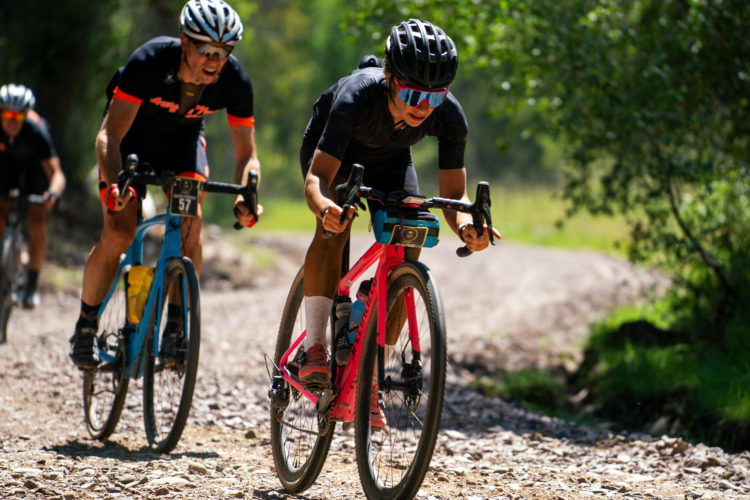

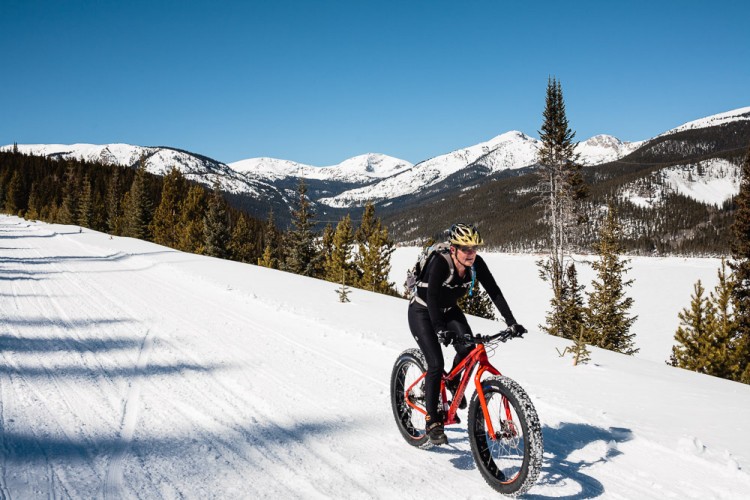

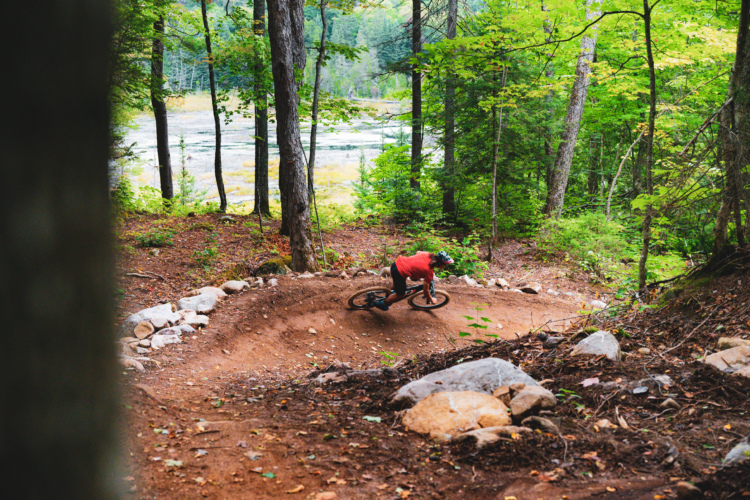
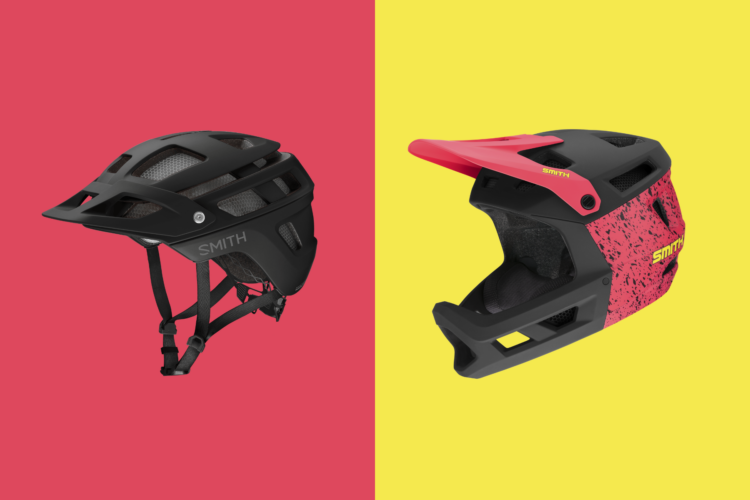

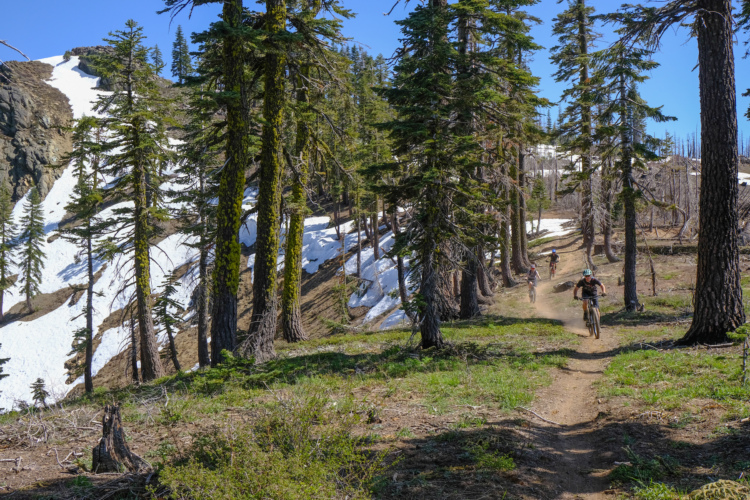

0 Comments